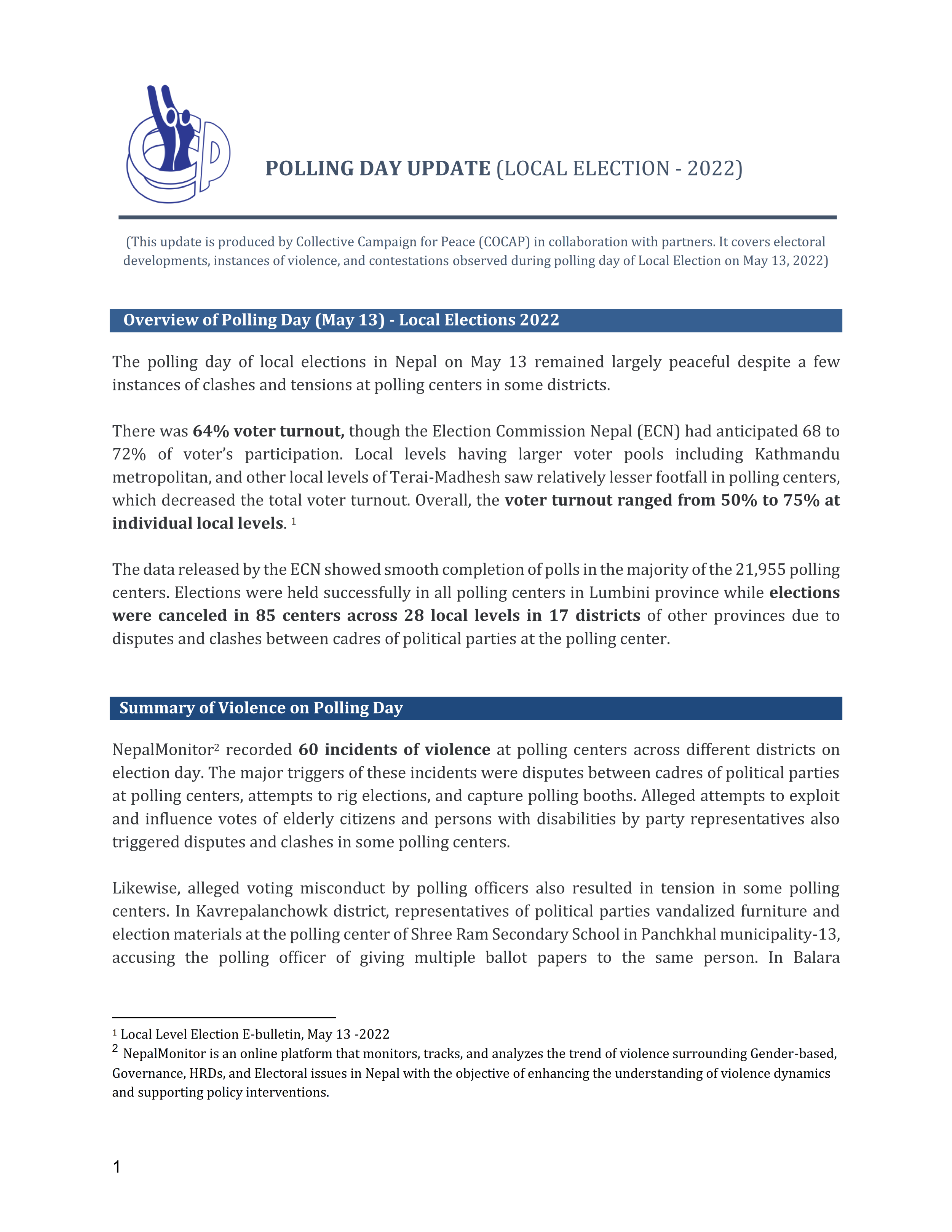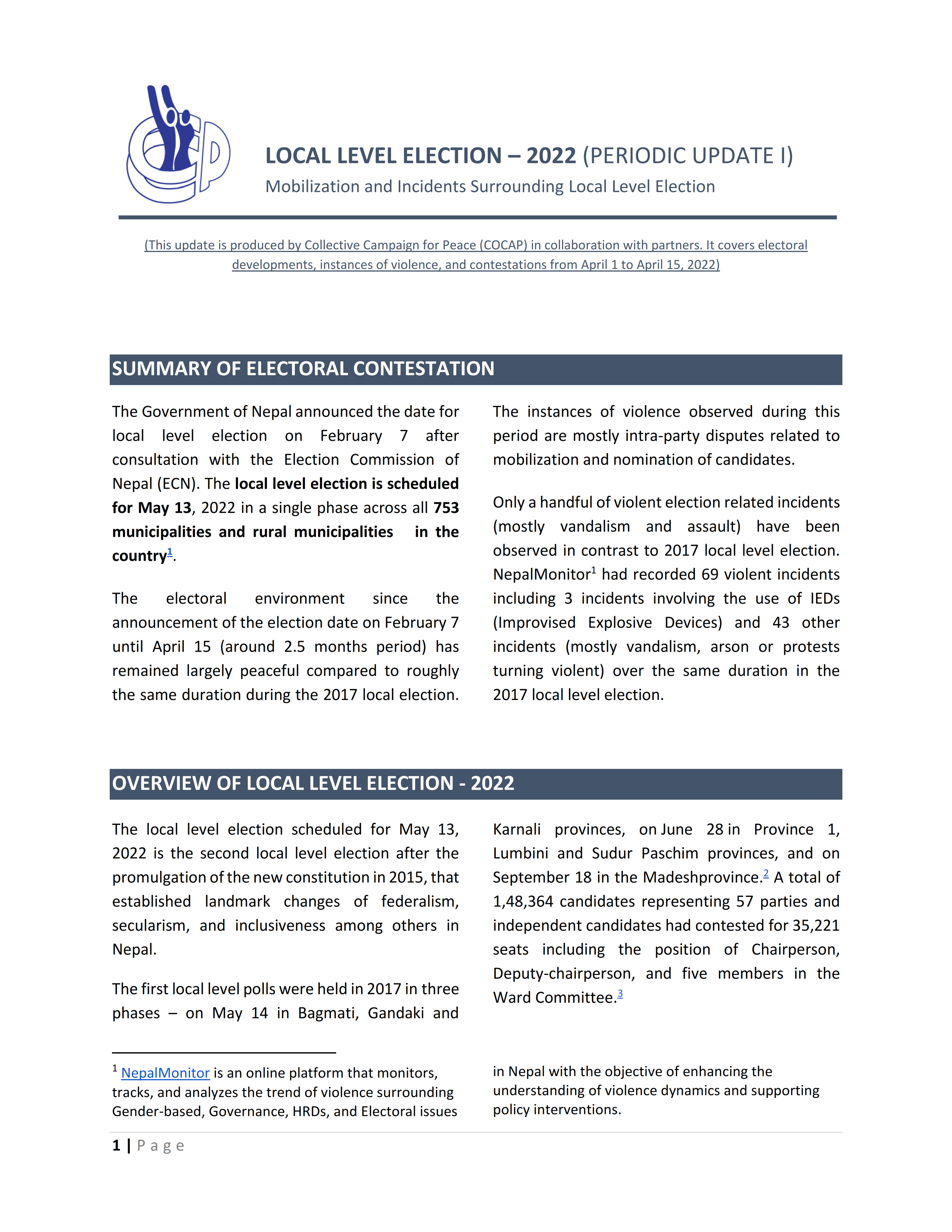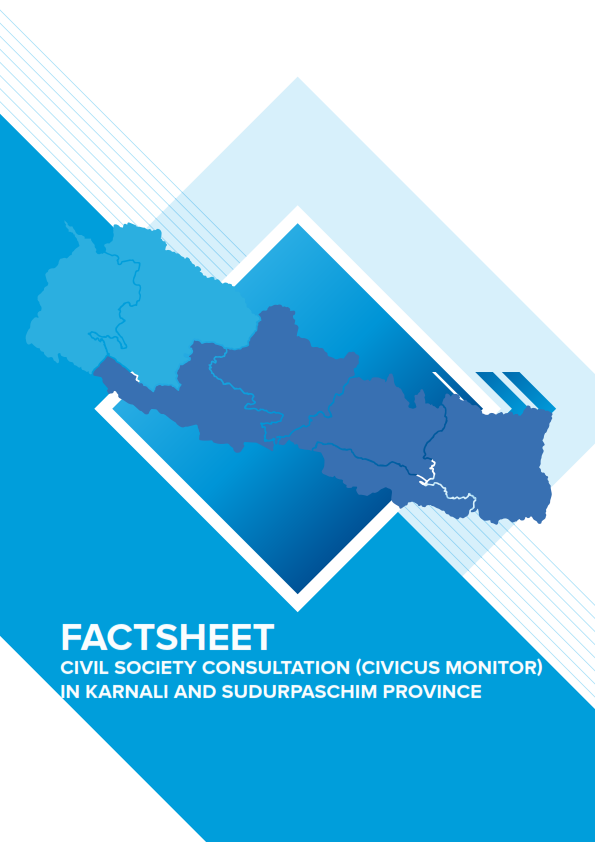Incident Reports
Over 6,000 households relocated: Home Ministry
2015-08-08
The government has relocated a total of 6,945 vulnerable households from 17 districts worst hit by the devastating 7.8 magnitude earthquake. Under its first phase of the temporary relocation plan, the Home Ministry has moved the households to safer locations identified within their existing settlement areas since June 30. “The relocated households are from areas which are severely affected by the earthquake and aftershocks, especially those settlements that are at high risk of landslides,” said Baburam Bhandari, chief of Nepal Emergency Operation Centre (NEOC) under the ministry, explaining that it was a temporary move and the government was working on a long-term resettlement plan. According to Bhandari, the resettlement is for three months to protect the vulnerable communities from further water-induced disasters. “The decision to relocate more households from the affected districts in the coming days would depend on the recommendation forwarded by the respective district disaster relief committees,” he said.
The government had formed a nine-member high-level taskforce in the third week of May to conduct a geological survey in 18 quake-affected districts and recommend appropriate relocation plans for the most vulnerable communities. Based on the taskforce’s recommendations, the government on June 30 set up another task force under Home Minister Bamdev Gautam, which included Federal Affairs and Local Development Minister Prakash Man Singh and Urban Development Minister Narayan Khadka, to work on the relocation of vulnerable communities within two weeks. The task force had identified that at least 19,041 households in 18 districts are at high risk of post-quake disasters and need to be relocated immediately. “However, depending on the available technical and financial resources along with the recommendations from the local authorities in the affected districts, the government has relocated only around 7,000 households so far,” said a government official. According to ministry officials, the relocation plan has not been easy though. On one hand, the people living in the vulnerable areas are reluctant to relocate in the temporary safe shelters from their existing settlements, while on the other hand, the government side lacks proper planning, infrastructure, and technical and financial resources to carry out the relocation plan.
Related Reports
Governance / Kathmandu
Medical education concern committee protest by banging plates and whistling
Governance / Darchula
Workers padlock school citing non-receipt of wages for more than a year
Governance / Sunsari
Prohibitory order issued in Dharan, tightening at entry points
Governance / Morang
Students of Eastern College in Biratnagar on protest
Related Trend Analysis
Analysis

THE NEPAL PEACE MONITOR ANNUAL REVIEW: 2020
October 25, 2021
Human Trafficking / LGBT+ Rights / GBV / Political / Children’s Rights / Senior Citizens’ Rights / HRD Issues / Human Rights / Interpersonal Violence / Governance / Covid-19 / Civic-Space / PwD

_001.png)




